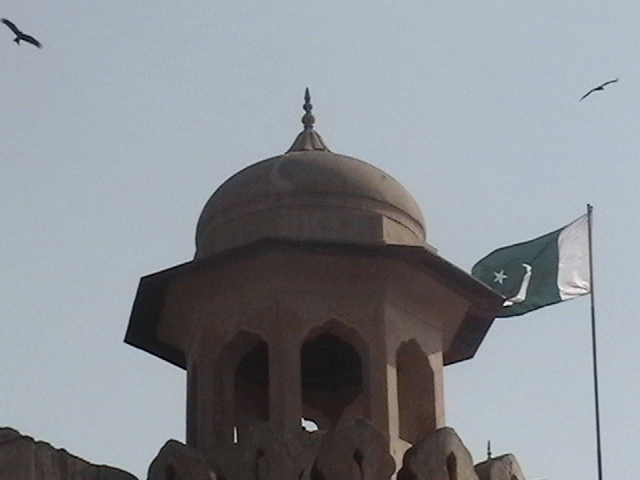
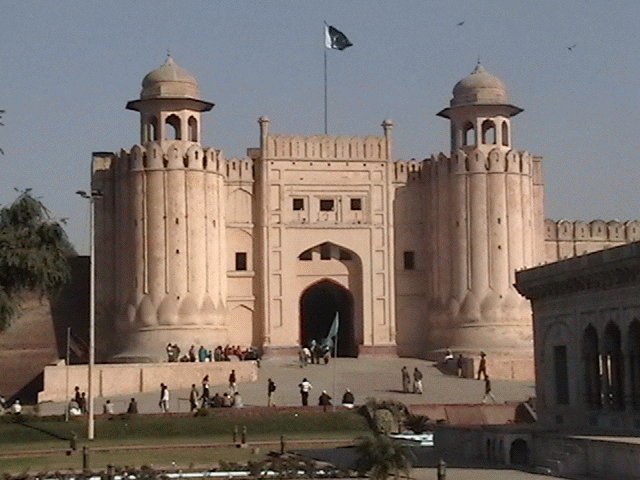

Shahi Qilla "Royal Fort"


Lahore has been seat of every successive government in India and specially the Punjab. Therefore one comes across a plentiful of structures and monuments that dot the landscape of Lahore. But two specimens of Mogul architecture cannot escape the eye of anyone entering Lahore from Rawalpindi on the Grand Trunk Road; the Badshahi Mosque and the Shahi QIlla or the Royal Fort.
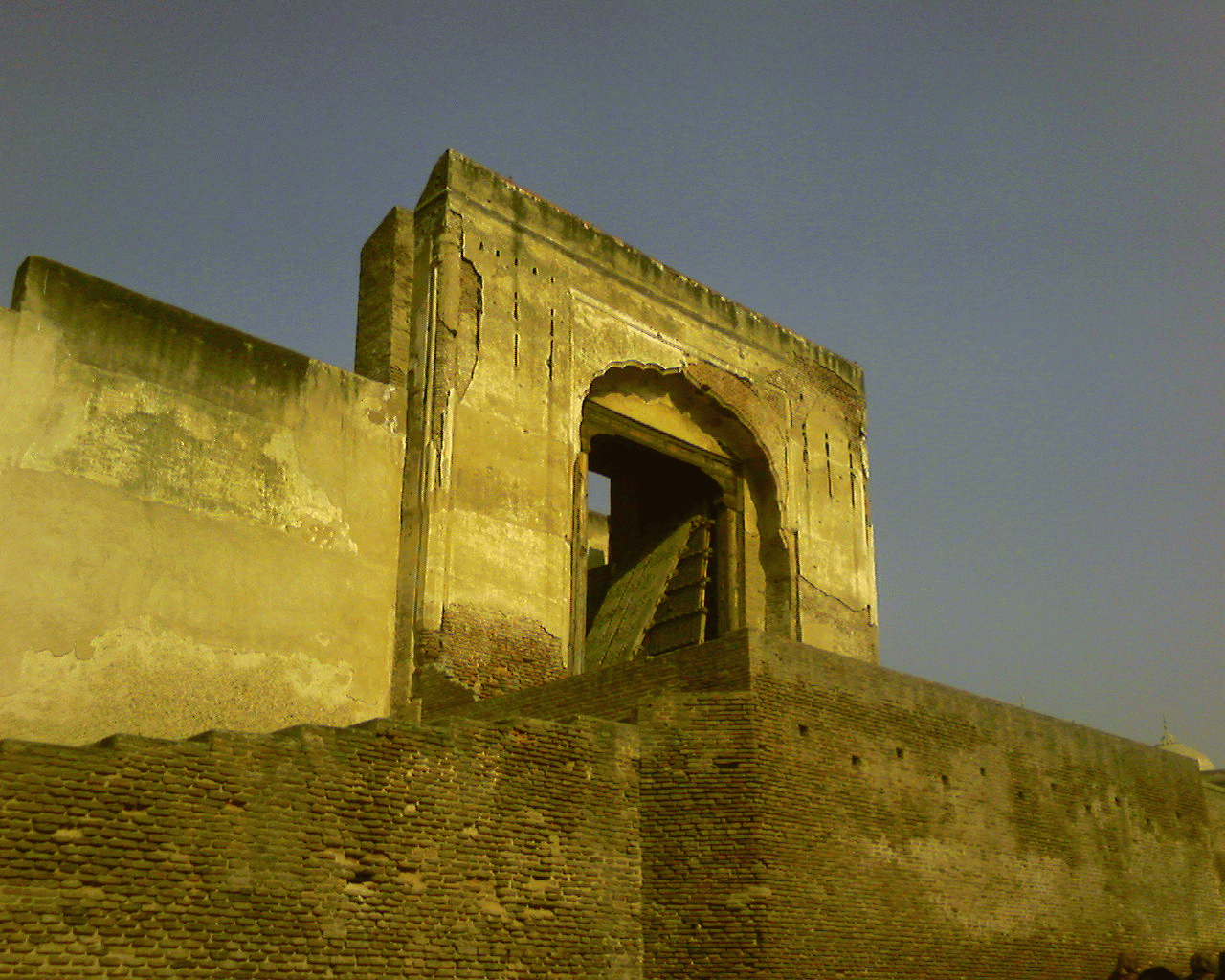
The fort was initially constructed in 1566 AD by the Mughal Emperor Akbar, on the ruins of a mud fort which existed as early as 1021 AD. The Fort is rectangular and is located in the north western corner of Lahore, adjacent to the Walled City. It has 13 gates. The main gates are located alongside the centre of the western and eastern walls. Located centrally in the city of Lahore, the Lahore Fort is a magnificent fortified palace complex. Its elaborate Mughal architecture is straight out of a storybook of the Mysterious East. The impressive twin-domed entrance leads into elaborately decorated courtyards and pavilions with water features, some with still intact sumptuous wall decorations of inlaid semiprecious stones and painted designs. It's large enough to allow several elephants carrying members of the royal family to enter at one time. There are a flight of stone steps specially built for ceremonial elephant processions.
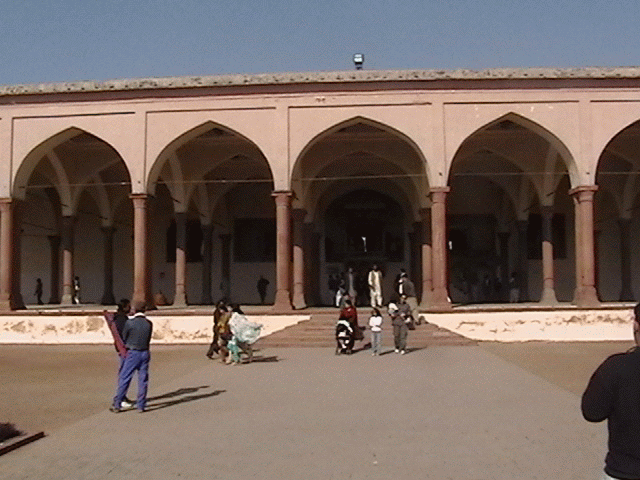
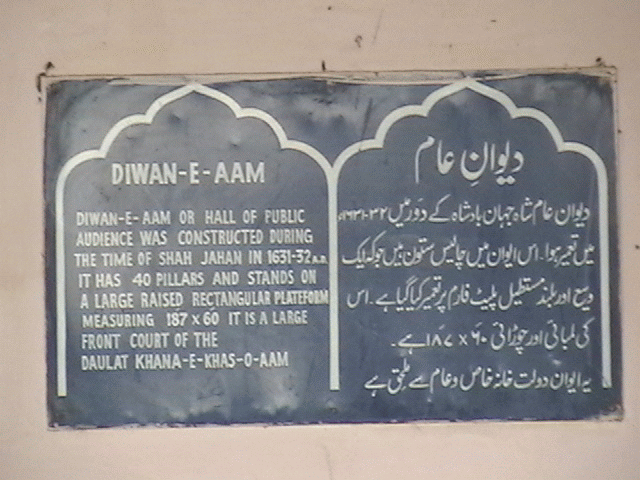
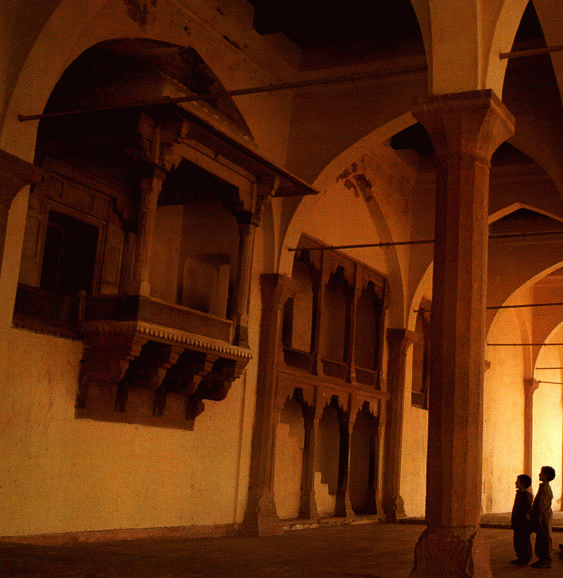
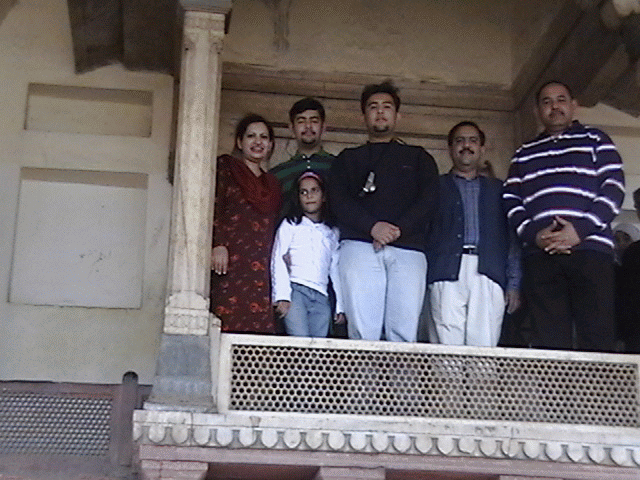
Diwan-e-Aam - Now used by common people for a memorable photograph
The fort as it stands today is not what it was when it was initially constructed in 1566. Every successive Mughal emperor besides the Sikhs, and the British added a pavilion, palace of wall to the Fort. Jahangir, Shah Jehan and later Aurangzeb added modifications of massively fortified walls. Akbar got the Diwan-i-Aam (Hall for Commoners) built in the traditional Iranian style, all constructed in red sand stone imported from Rajistan. Shah Jahan also constructed the Diwan-e-Khas, that overlooked Ravi, in 1631-the same year he started the Taj Mahal. Shah Jahan also constructed Moti Masjid (Pearl Mosque) and his own sleeping chambers. Emperor Jahangir extended the gardens and constructed the palaces in the Jehangir's Quadrangle.
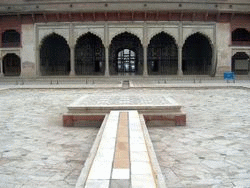
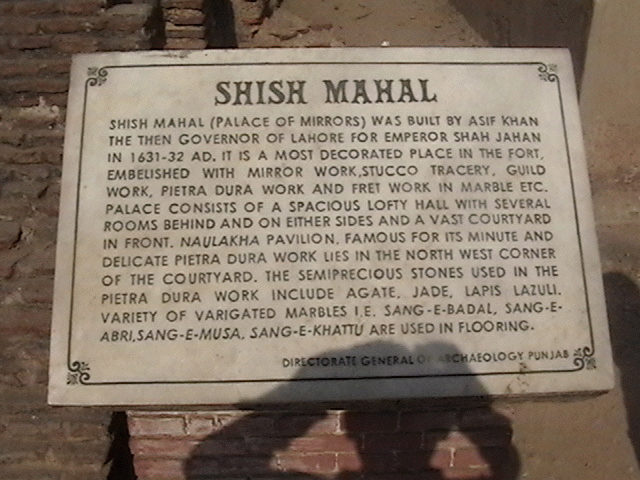
The famous Sheesh Mahal (above left) or Palace of Mirrors, located in the north-east corner of the fort, is the most beautiful palace in the fort and is decorated with small mirrors of different colours set. Sheesh Mahal was constructed by Shah Jahan in 1631. The Sheesh Mahal is the luxurious place of resort particularly during summer months with rest rooms of a long hall at its either end, opening on to the brilliantly dazzling Veranda that looks at the marble paved quadrangle with a fountain in the middle side.
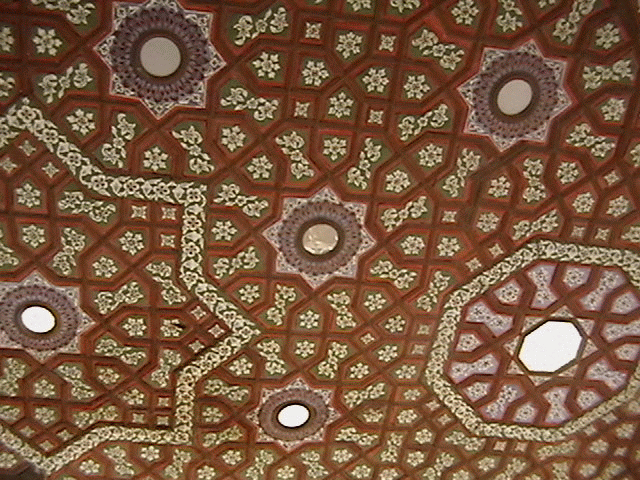

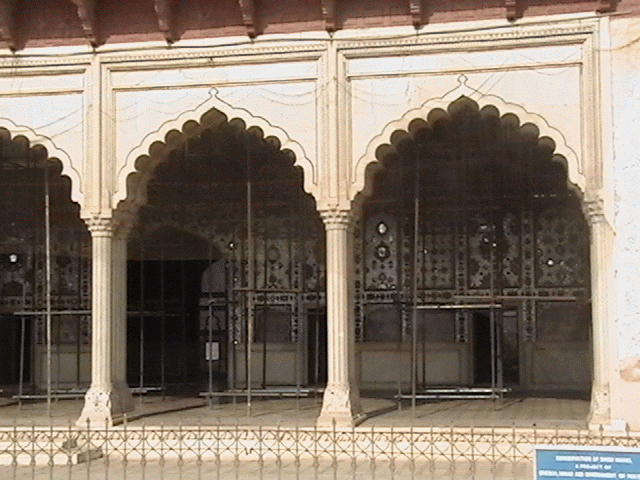
The mirror reflects the stars and the bedrooms presents, in its ceiling, the panorama of a star lit Sky. The exterior wall of the Sheesh Mahal one can see the beautiful mosaic paintings that depict everyday sport of the Mughal princes for the enjoyment of the people who used to gather below the fort not only to have a view of the emperor sitting in the Jharokha but also to admire the brilliance of colours on the wall.
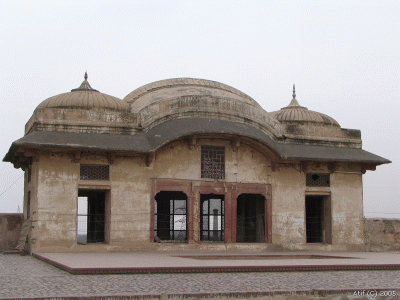
Here one can observe galloping horses, humped camels, elephant ride, hunting scene, animal fights, horse man plying polo, camel fights, figures of angels, demon head sand moving clouds, horse and elephant riders crossing Swords and verities of floral and geometrical designs. From Sheesh Mahal one can have a magnificent view of the Badshahi Masjid built by Aurangzeb on a spot regained after the river Ravi shifted further away and the Minar-e-Pakistan.
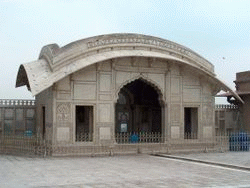
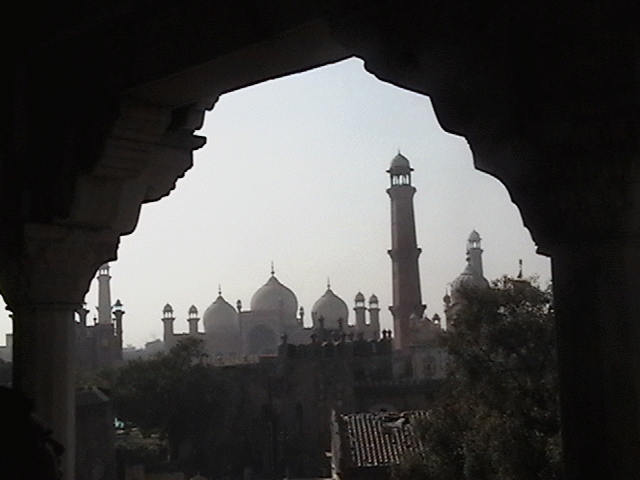
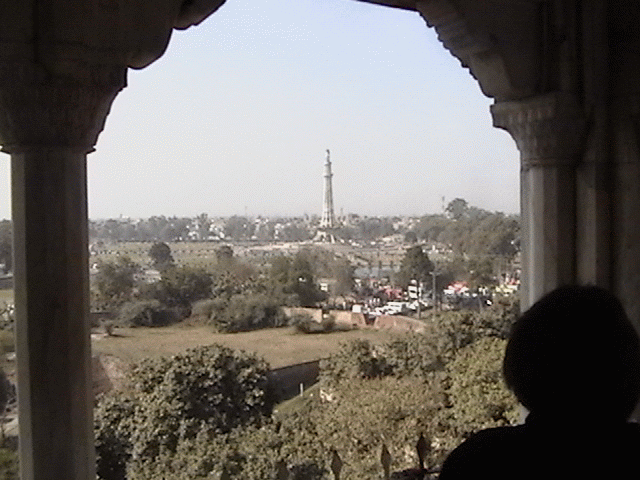
Left to Right: Naulakha Pavilion - View from Sheesh Mahal (Badshahi Mosque - Minar-e-Pakistan)
The Nau-Lakha Pavilion (above left) is a marble building located at the Sheesh Mahal courtyard. Its western face provides a panoramic view of the ancient city of Lahore. It was also built by the Shah Jahan in 1631 A.D. at a cost of Rs.900,000, an exorbitant amount at the time. It is therefore called Nau - Lakha as it in Urdu means 'worth 9 lakhs' (one lakh equals 100,000). The brilliance of its precious stone outshone the natural setting of flowers and tree leaves that decorate the walls. Ranjit Singh during his occupation of Punjab had his rest rooms built over the present building of Sheesh Mahal. However, the original building could not bear the additional weight and over a period of time, cracks start to appear in the main building of the Sheesh Mahal. In order to preserve the this magnificent building, recently the upper chambers have been demolished and presently, a major renovation work is in progress to restore the grandeur of the mahal.
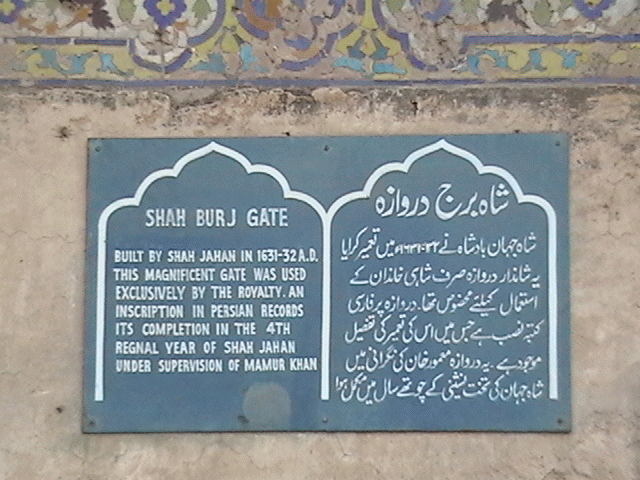
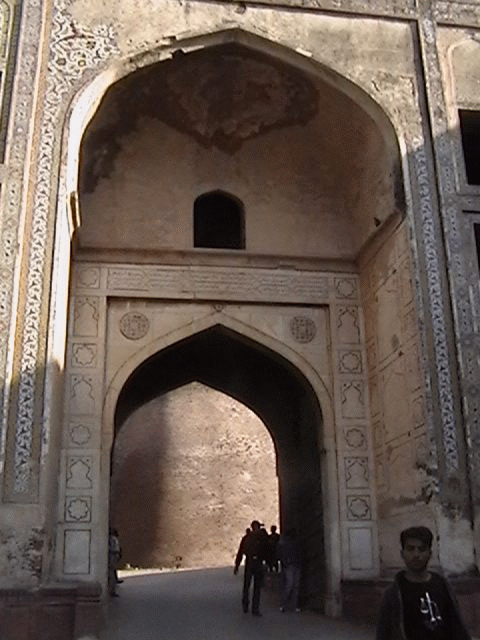
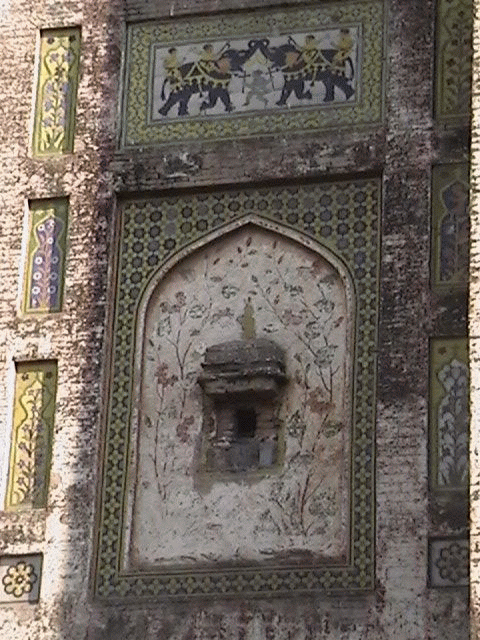
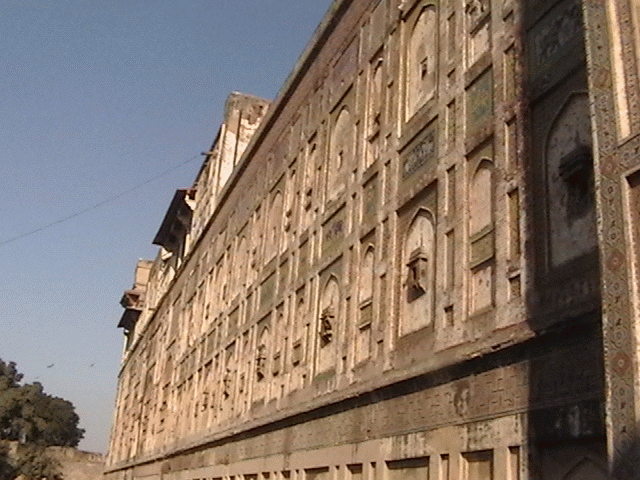
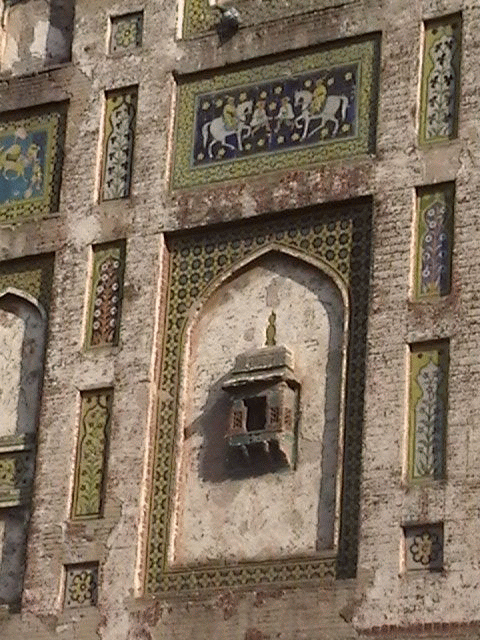
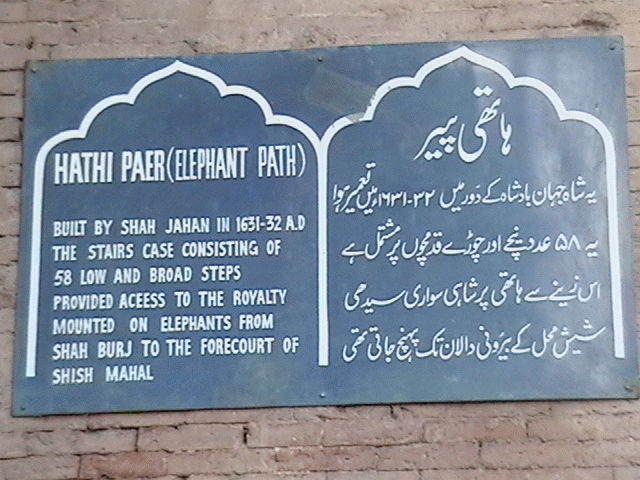
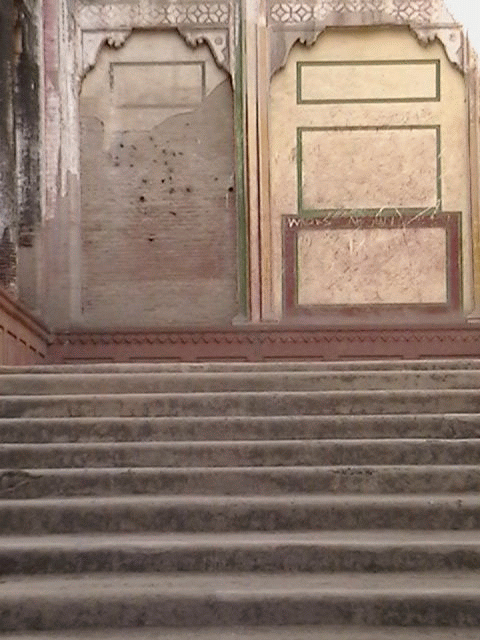
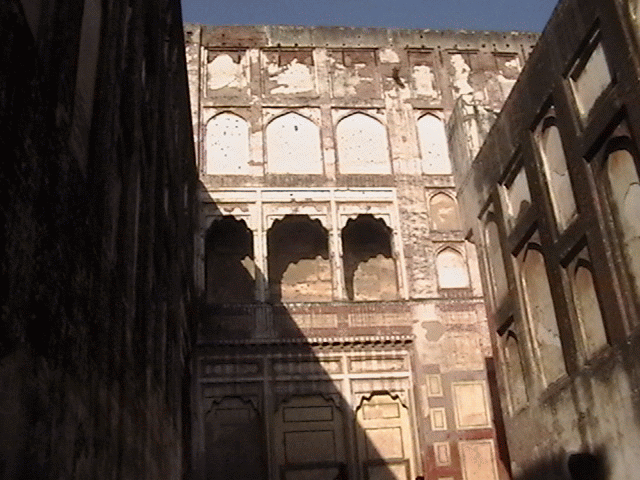
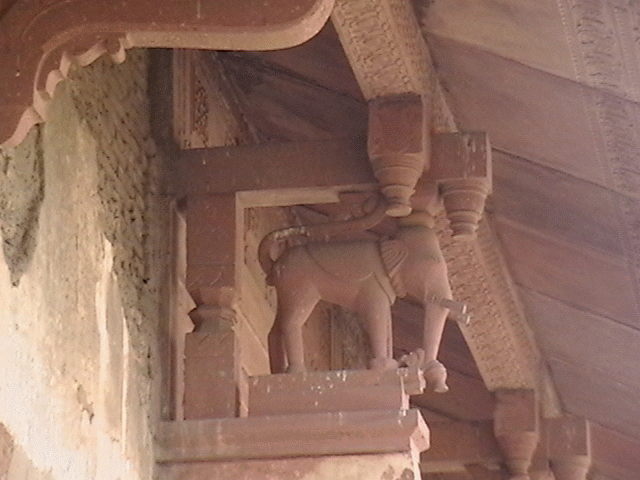
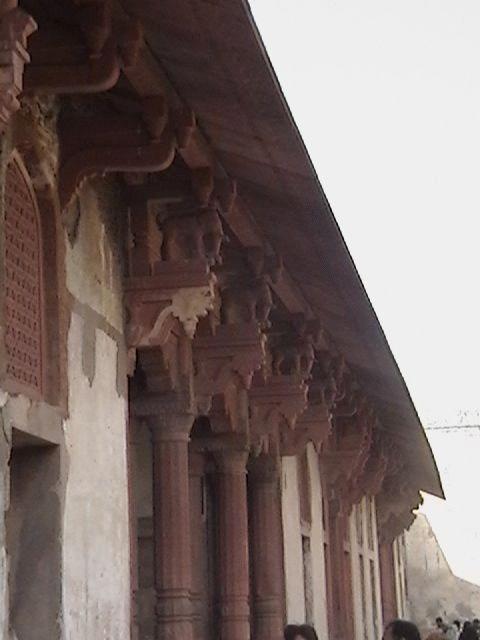
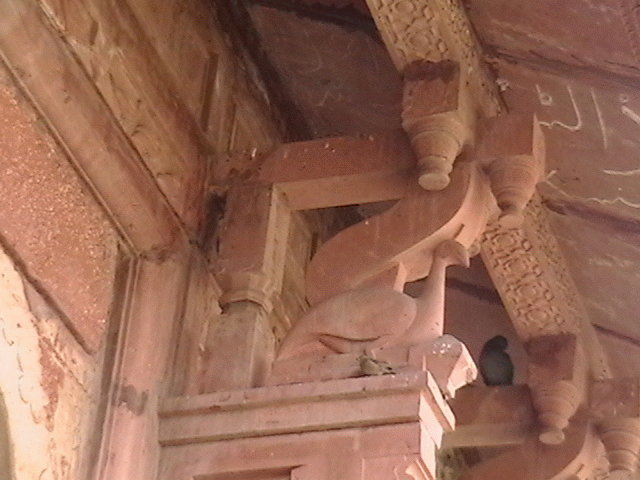
The stone columns each with a different mast atop displaying the aesthetics of its builders
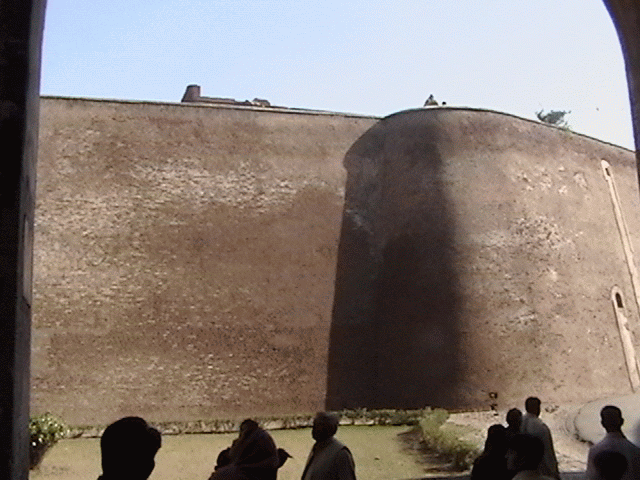
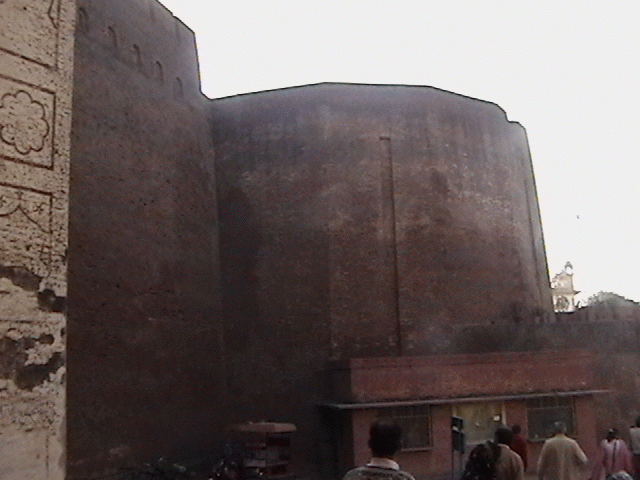
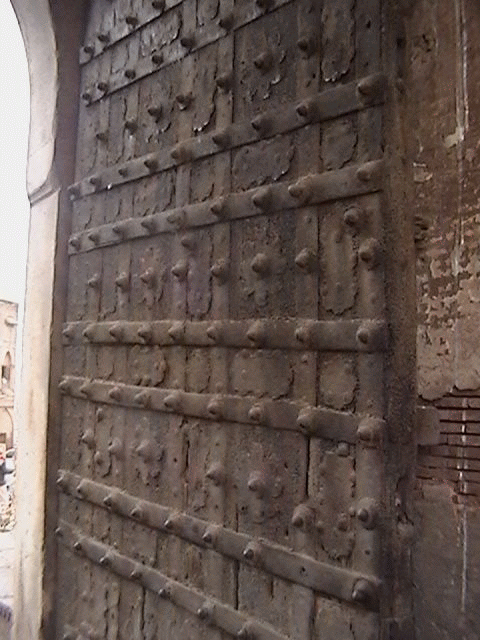
The massive structure and heavily studded doors still stands majestically to remind us the glory and grandeur of the past
|
|
Aurangzeb built the impressive main gate which faces the Hazoori Bagh lying in between the Badshahi Mosque and the fort. The gate is thus referred to as the Alamgiri Darwaza (Gate). The gate is situated on the eastern edge of the Lahore Fort, and leads by way of a sharply angled passage, to the large courtyard of the Diwan-i-Amm. The huge arched entrance in the centre was designed to allow the emperor's elephant mounted caravan to pass through. It leads to the central square hall having deep arched recesses on the east and north and a staircase leading to the upper storey buildings. The archway on the south leads to interior of the fort. |

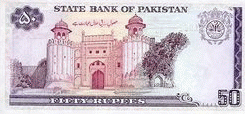
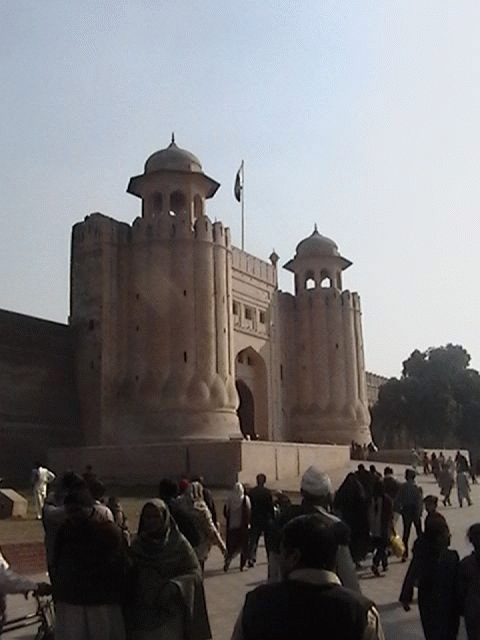
The back side of Rs. 50 currency note of Pakistan also bears the drawing of Alamgiri Gate
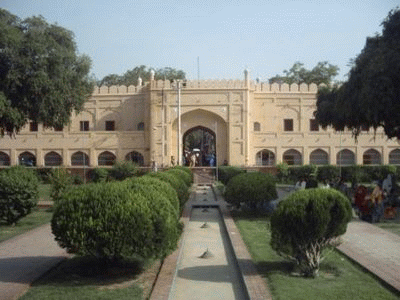
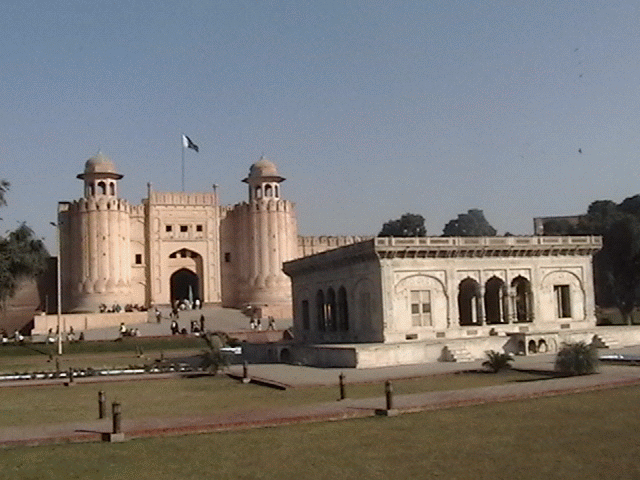 The Sleeping Chamber of Mai Jindan houses a very
interesting museum with relics from Mughal and the Sikh period. Hazoori
Bagh (left) is an enclosure between the Alamgiri Gate of the Lahore
Fort and eastern gate of the Badshahi Mosque. On 19 July 1932, the uppermost
story collapsed and was never reconstructed. This garden was built by Ranjit Singh in 1813 to celebrate the capture of the famous
Kohinoor
diamond from Shah Shujah of Afghanistan. However, the fort was
mercilessly plundered by the Sikhs when the gained control of Punjab in the
1800s. Ranjit Singh ruled Lahore for fifty years and stripped its monuments
of practically all the ornaments and transferred them to Amritsar. The most badly hit was Sheesh Mahal, and most of its decorative
mirrors were looted and later used for the beautification of the Golden
Temple in Amritsar. The part of the wall of the elephant Steps towards the
forts inner gate are scarred by bullet marks, bearing testimony to the Sikh
Civil War of 1847 AD. A party of Sikhs had mounted their guns on one of the
minarets of the mosque across the courtyard from where they fired on their
opponents.
The Sleeping Chamber of Mai Jindan houses a very
interesting museum with relics from Mughal and the Sikh period. Hazoori
Bagh (left) is an enclosure between the Alamgiri Gate of the Lahore
Fort and eastern gate of the Badshahi Mosque. On 19 July 1932, the uppermost
story collapsed and was never reconstructed. This garden was built by Ranjit Singh in 1813 to celebrate the capture of the famous
Kohinoor
diamond from Shah Shujah of Afghanistan. However, the fort was
mercilessly plundered by the Sikhs when the gained control of Punjab in the
1800s. Ranjit Singh ruled Lahore for fifty years and stripped its monuments
of practically all the ornaments and transferred them to Amritsar. The most badly hit was Sheesh Mahal, and most of its decorative
mirrors were looted and later used for the beautification of the Golden
Temple in Amritsar. The part of the wall of the elephant Steps towards the
forts inner gate are scarred by bullet marks, bearing testimony to the Sikh
Civil War of 1847 AD. A party of Sikhs had mounted their guns on one of the
minarets of the mosque across the courtyard from where they fired on their
opponents.
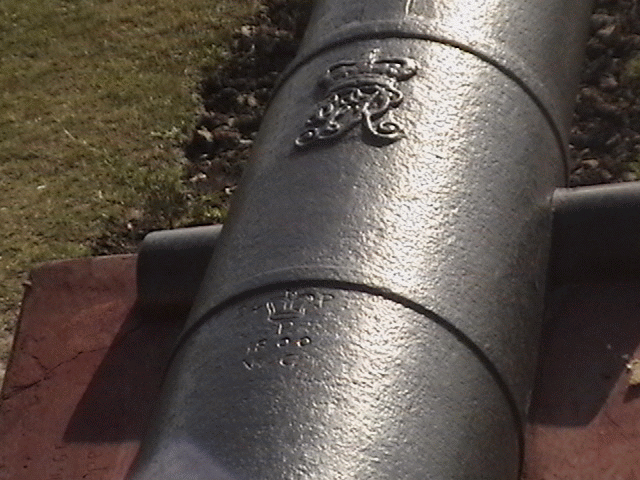
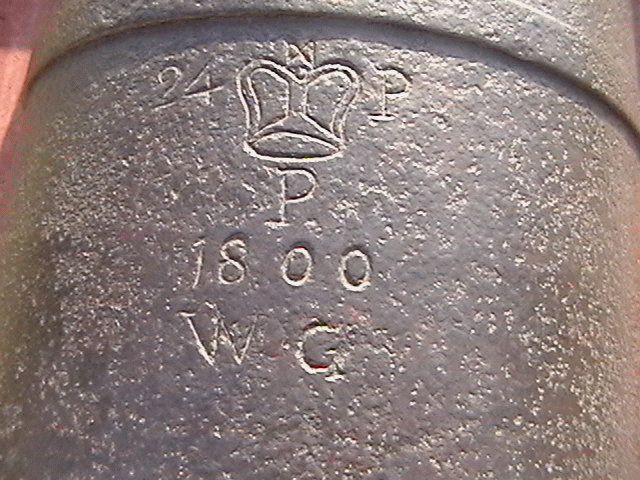
Two guns dating 1800 were installed by the British as reminder of their occupation of the Fort and the Indian subcontinent
In 1846 the fort was occupied by the British and was closed for general public in 1853. In 1927 the British handed over to the Department of Archaeology after demolishing a portion of the fortification wall on the south and converting it into a stepped form thus de-fortifying the fort. After the creation of Pakistan in 1947, when the Colonial Rule came to an end in the Indian subcontinent, the fort was reopened to general public on 11 November 1949 - 96 years after its closure by the British.
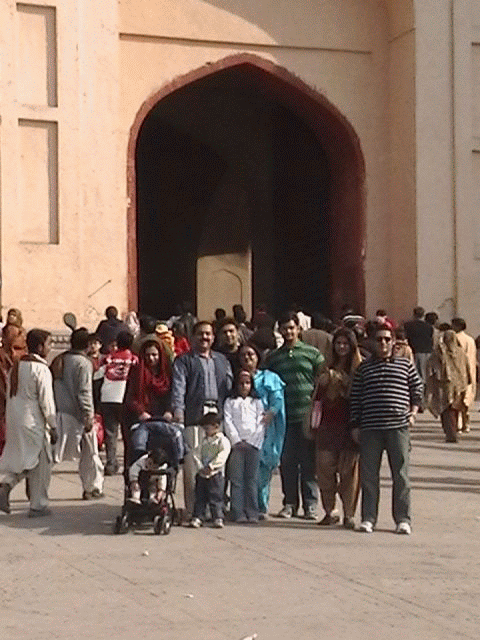
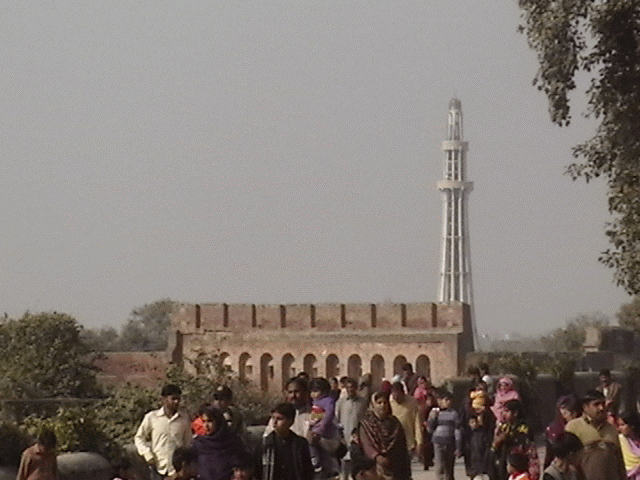
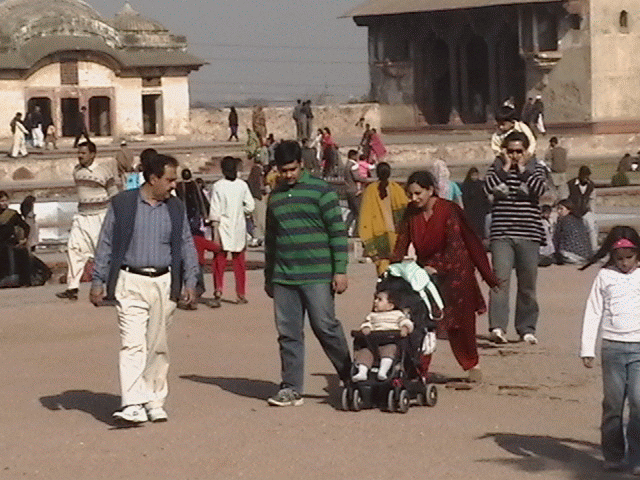
The fort has become a very active place for the picnickers who spend the day on the lawns of the fort and admire those who build this massive structure. The Lahore Fort is also listed with the UNESCO's World Heritage Foundation and presently massive efforts are at hand to restore its to its once original might and beauty - though the plundering and looting by the Sikhs and the British would never be able to be compensated.
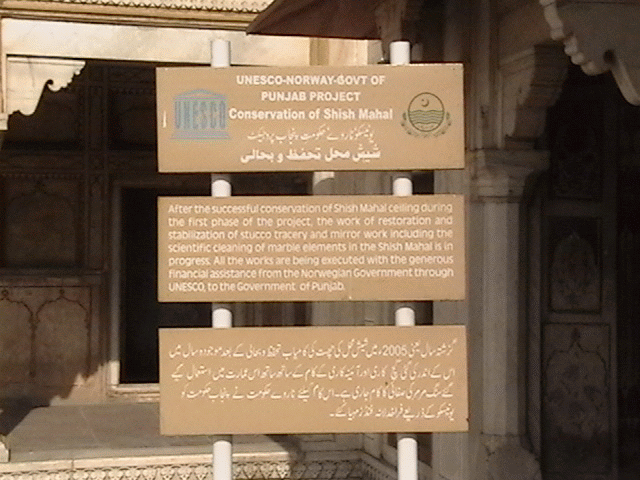
All Photographs of the Lahore Fort were taken exclusively by the Webmaster Pakistanpaedia
|
Related Links:
| The
Fortress Gardens of Lahore |
Map
Lahore Fort |
| Pakistan: Lahore Fort |
|
|
This page was created on 21 April 2006 / ©JalalsPages - 2005 - 2007 |